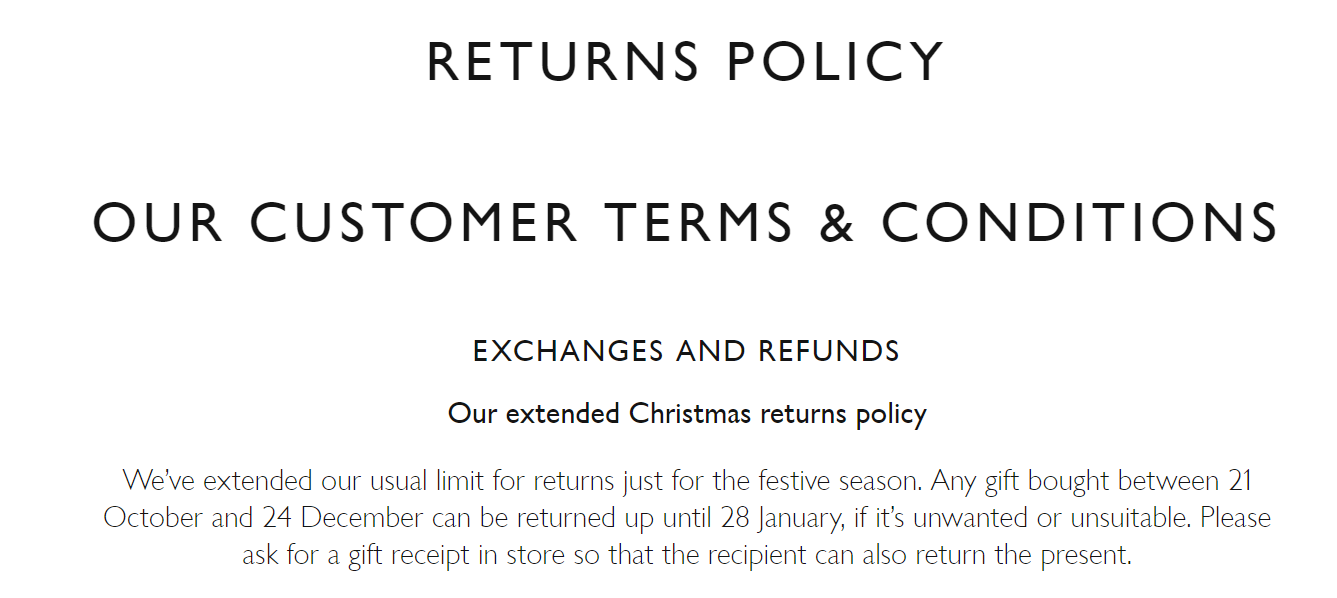An essential component of a well-run online shop is a foolproof e-commerce exchange policy. Whether a customer wants to return an item, if he ordered the wrong size, isn’t happy with a product, or changes his mind, you need a process in place. E-commerce will account for up to almost 23% of total retail sales globally by 2023. With this huge proportion of sales being online, is natural that returns and requests for exchanges increase with higher sale volumes.
Recently, we’ve introduced our app Exchange It. Built for Shopify merchants, this is a simple solution allowing you to process and complete e-commerce exchanges with great ease. To help you navigate the use of our app with your store, an exchange policy will make everything much more efficient.
As we’ve discussed in previous articles, exchanges are a great way to optimize your returns process, saving you money and time. But this needs to be done with a good returns and exchanges policy in place. In this article, we explain you the essentials to have in your exchange policy.
First, I’ll explain what an exchange policy is and why it is important. Following this, you’ll get 6 tips for things to include in your e-commerce exchange policy.
This may seem like a complicated thing to write, but it doesn’t have to be! Take a look at my advice below to make your exchange process as smooth and effective as possible.
What is an exchange policy?
An e-commerce exchange policy sounds daunting, but it’s quite straightforward if you do it right. All online retail stores should have a refund and return policy*. Whilst this is not necessarily a legal requirement, it is pretty crucial for customer satisfaction. I am focusing on one component of this, which is exchanges.
An exchange is, on a basic level, when you offer the customer the option to swap one item purchased through your store with another. The parameters of what this can include are up to you to define.
Why do you need an exchange policy for your e-commerce store?
There are a few reasons why an exchange policy is useful in e-commerce. Similar to a return and refund policy, it enables you to build trust with your customers who know they can swap or return items if they are not satisfied. This will also increase customer satisfaction, and build up store loyalty amongst shoppers.
Having this policy stated clearly on your website and/or social media promotions is important, as it reduces the administration of telling customers policies individually, and increases transparency. Again, this is essential for building trust with online shoppers.
I have emphasized the importance of transparency and trust for good reason. According to a Retail Dive consumer survey*, at least 56% of American shoppers in 2017 preferred to visit stores to physically see, touch, and handle products before buying online. This shows shoppers often trust products in physical stores over those they see online only. As an e-commerce business, especially if you are only online, you must provide ways for your customers to experience your products so they feel able to buy from you online.
Moreover, it is efficient for you to have an exchange policy. When a product is returned, it can often mean that profit is lost. However, if you can ship an exchange at a low cost, you get to retain the sales you’ve made whilst keeping your customers happy. This will help in the long run with customer retention.
This also protects you from potential legal issues if there is a dispute over a sale, especially if your policy is in the public domain.
6 things to include in your e-commerce exchange policy
Keep reading for 6 essential points to include in your e-commerce exchange policy that will make it transparent, straightforward, and robust.
1. Explain what exchanges you offer
Foremost, being clear on what exchanges you offer is essential. It’s no good confusing a customer without a clear set of guidelines for what you will and won’t exchange a purchase for!
In a broader returns and refunds policy, you should lay out offers like full refunds, partial refunds, or store credit. In an exchange-specific policy within this, make sure the customer knows what products can be swapped for. This may include items of the same value, the same type in a different size or style, items of lesser value with a partial refund, or higher value with additional cost.
2. Determine the parameters of the exchange
Once you are clear on what is to be included in exchanges, you need to define the conditions on which an exchange can be made. You should collect data on why a customer is exchanging something, but also let them know how the item needs to come back to you.
Can you exchange opened products, or must they be sealed and unused? Do you need tags intact, or are they okay to be just included in their returns package? What condition should a product be in when it arrives back to you? This all depends on whether you plan to resell the item or not.
If you lay this out upfront on your store website, then there can be little dispute if customers are unhappy with how you’ve dealt with a return if it is not in the right condition.
3. Be transparent and upfront
Again, transparency is key to a good e-commerce exchange policy. Telling customers exactly how long they have to return an item, how long it will take you to process the exchange, and when they can expect a new item to arrive is important. Most customers will expect you to uphold a 30-day returns period (sometimes 14-days for sale items), so consider this when you write your policy.
Furthermore, customers want to be aware of what a return or exchange will cost them if anything. Free returns are increasingly being cut out of policies globally, as businesses realize the cost and unsustainable nature* of facilitating these. This is not to say you shouldn’t offer free exchanges if you can, but consider what it will cost your business and the environment to do so.
Will you include a pre-paid returns label in all orders, or do customers have to buy one? Do you encourage customers to re-package the item in the original packaging, or do you provide something new? Will these policies depend on the reasons for return?
Customers do not want surprise costs when ordering, returning, or exchanging products, so be very clear in your policy about what they can expect.
4. Write a simple set of consumer-facing instructions
In addition, giving customers simple instructions for how to make a return will cut down your administration during the process. On your end, creating a replacement order with Exchange It is simple. But your customers will need a few instructions for what to do on their side for you to be able to do this.
I recommend creating a basic, bullet-point list of the process, from requesting a return to what happens once it is posted, on your website. You can even include screen grabs of the returns pages, showing customers exactly where to go and how to navigate them. This is especially helpful if your consumer demographic is older, as many seniors* face additional barriers and challenges when using websites and apps.
5. Have a policy for if a return is denied
Sometimes, it is not possible to grant a customer’s return or exchange request. This may be because the exchange period has passed, or the item is not returned in the expected condition. Sometimes, this can cause upset or frustration for customers. It is therefore very important to have a clear policy on what to do in these situations.
Policy points such as allowing a customer to keep their purchase and pay return shipping, or allowing the product to be recycled by the company are common. You may also offer incentives to re-purchase with your stores, such as discount codes or special offers on products. Maintaining a level of customer satisfaction even in awkward situations that are not ideal on either side is the key to running a successful e-commerce store.
6. Include FAQs
Finally, there are always some extra things customers want to know. It’s difficult to cover every possible question in even the most comprehensive e-commerce policy. This is where FAQs come in.
Come up with a list of all the questions customers might ask, have asked previously, or you would want to know when shopping online. Have a dedicated space for these on your website. This allows customers to navigate any concerns they have independently before contacting you.
This will both cut down the time you spend dealing with questions about exchanges or returns, and give customers a sense that they can trust you to be comprehensive and fair with your policies!
Sources:
https://www.freeprivacypolicy.com/blog/why-ecommerce-store-needs-return-refund-policy/
https://www.retaildive.com/news/why-many-shoppers-go-to-stores-before-buying-online/441112/
https://www.voguebusiness.com/consumers/returns-rising-costs-retail-environmental
https://www.nngroup.com/articles/usability-for-senior-citizens/






